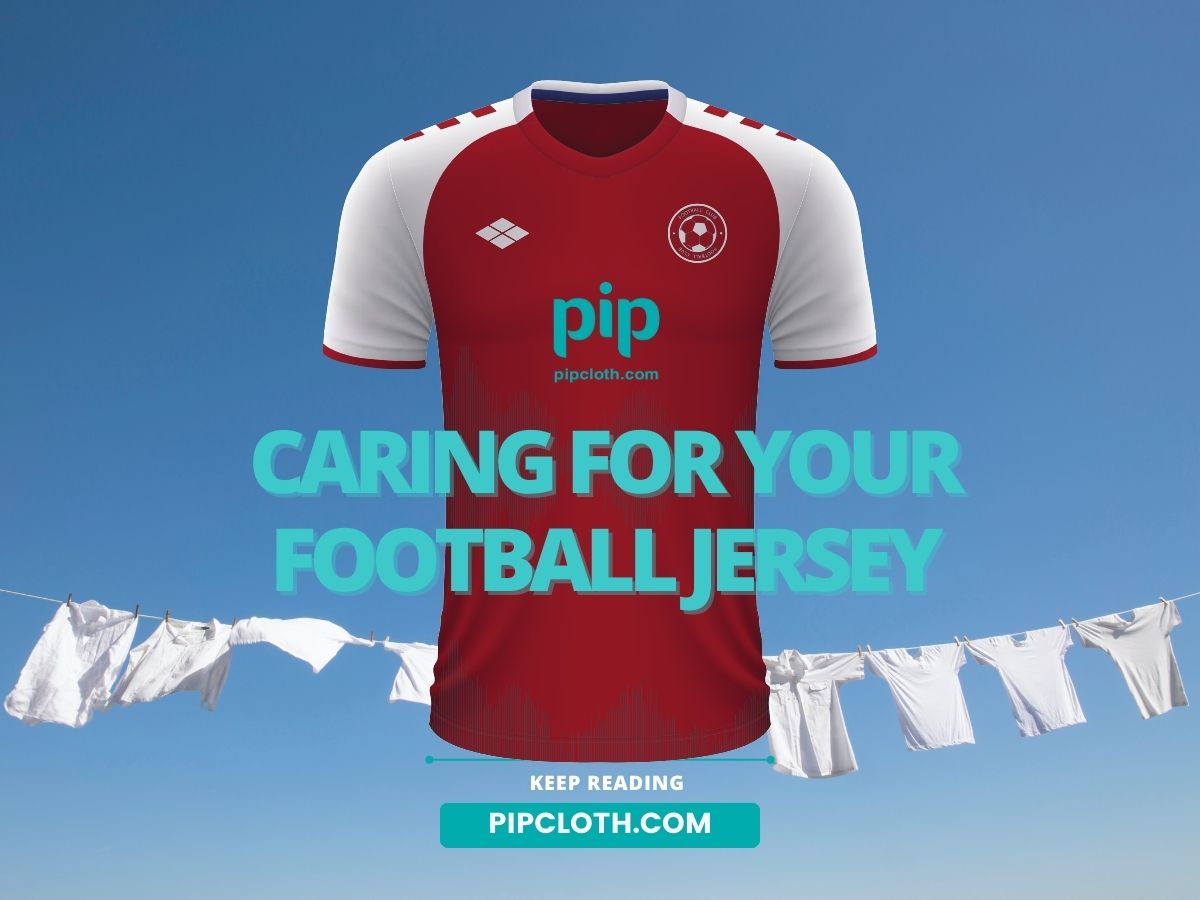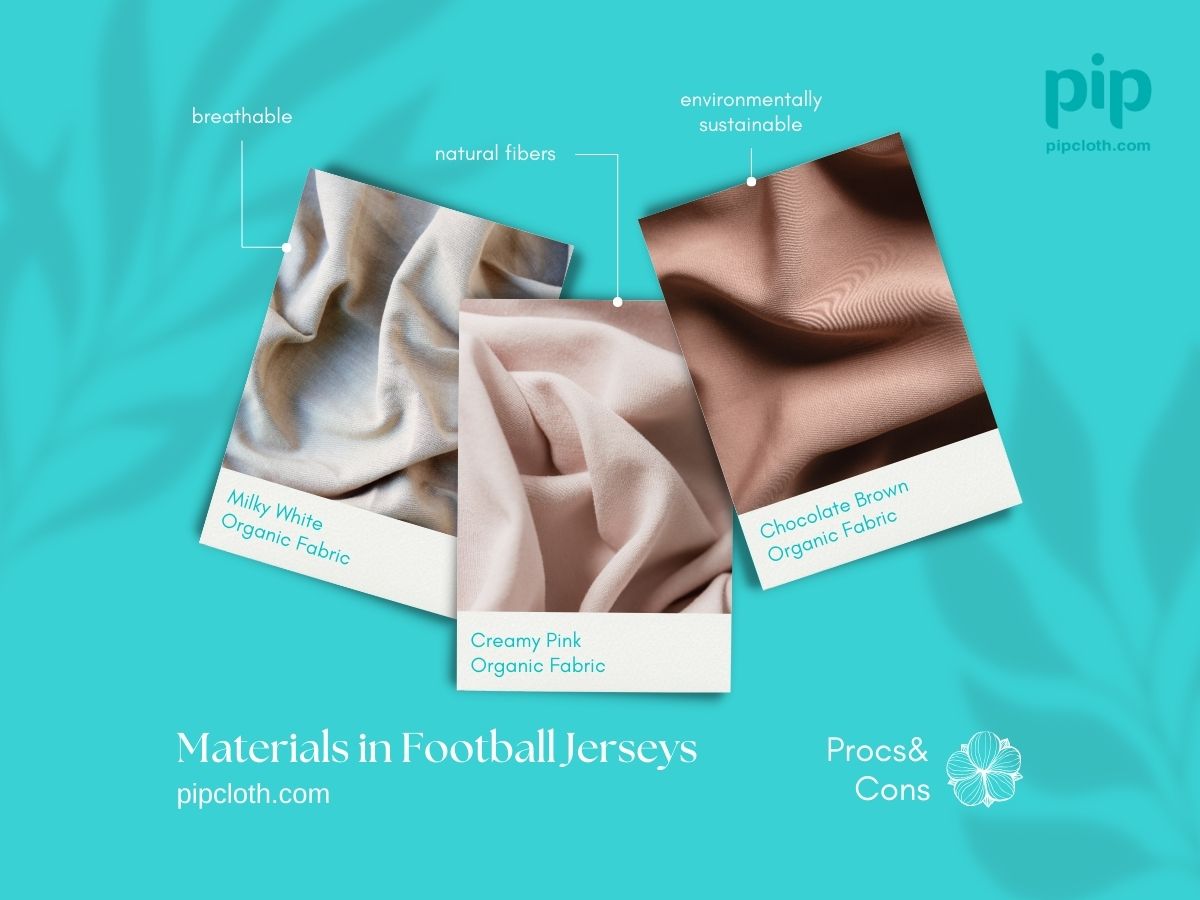The Ultimate Fan’s Guide to Rocking Stylish Football Jerseys
Choosing the Right Fit
When selecting a football jersey, finding the perfect fit is crucial for both comfort and style. Consider your body type and personal preference when deciding between a loose or snug fit. If you plan on layering your jersey over other clothing, opt for a size larger than your usual to accommodate the extra space . Don’t forget to consult the sizing chart provided by the manufacturer to ensure you choose the best size for your needs.
Material Matters
Football jerseys come in a variety of materials, each with its own benefits and drawbacks. Traditional jerseys made from natural fibers like cotton offer a soft and comfortable feel, but may not provide the same level of breathability and moisture-wicking properties as synthetic materials . Polyester and other synthetic fabrics are popular choices for their lightweight, durable, and moisture-management qualities, keeping you cool and dry during intense games or warm weather .
Showcasing Your Team Pride
One of the most important aspects of a stylish football jersey is showcasing your team pride. Choose a jersey that prominently features your favorite team’s colors, logo, and mascot. Consider adding personalization, such as your name or a favorite player’s number, to create a unique and individual look . Don’t be afraid to experiment with different styles, such as throwback jerseys or alternate color schemes, to stand out from the crowd.
Styling Your Jersey
Football jerseys are versatile pieces that can be styled in various ways to suit your personal taste and the occasion. For a casual look, pair your jersey with jeans or shorts and sneakers. Dress it up by layering it over a collared shirt or turtleneck and adding chinos or dress pants . Accessorize with hats, scarves, or watches in your team’s colors to complete the look. Remember, confidence is key when rocking your football jersey, so wear it with pride and let your team spirit shine.
Caring for Your Jersey
To keep your football jersey looking its best, proper care and maintenance are essential. Always follow the washing instructions provided on the label, typically recommending cold water and a gentle cycle. Avoid using bleach or fabric softeners, as these can damage the material and cause the colors to fade . Hang your jersey to air dry, as machine drying may lead to shrinkage or damage to any applied graphics or lettering.
By following these tips on fit, material, team pride, styling, and care, you’ll be able to confidently rock your football jersey with style and show your support for your favorite team. Remember, a stylish football jersey is not just a piece of clothing, but a representation of your passion and dedication to the sport.
Introduction
Football jerseys have transcended their role as mere sports apparel, evolving into a powerful medium for self-expression and fashion statements. According to a recent survey by the Football Fans Census, an astonishing 78% of fans consider their jersey choice a reflection of their personal style. With the rise of collaborations between football clubs and renowned fashion brands, such as the Paris Saint-Germain x Jordan partnership, the demand for stylish and trendy football jerseys has reached an all-time high. This comprehensive guide will navigate you through the key aspects of selecting a fashionable football jersey, from understanding material options and fit to exploring the latest design trends and sustainable choices.
Decoding Jersey Materials: Comfort, Durability, and Performance
When it comes to choosing the perfect football jersey, understanding the intricacies of fabric composition is paramount. Polyester, a synthetic polymer known for its durability and moisture-wicking properties, has become the go-to material for modern jerseys. A study published in the Journal of Textile Science and Engineering revealed that polyester fibers have a moisture regain of only 0.4%, compared to cotton’s 8.5%, making it an ideal choice for sweat management during intense matches.
Innovations in textile technology have led to the development of advanced polyester blends, such as Nike’s Dri-FIT and Adidas’ Climalite, which enhance breathability and quick-drying capabilities. These cutting-edge fabrics utilize microfiber construction and laser-cut ventilation to facilitate airflow and regulate body temperature. A report by Grand View Research predicts that the global performance fabric market will reach $13.8 billion by 2027, fueled by the growing demand for technologically advanced sportswear.
In addition to polyester, mesh panels have become a popular feature in football jerseys, strategically placed in high-heat zones to maximize ventilation. The Journal of Sports Engineering and Technology found that incorporating mesh panels can increase air permeability by up to 60%, significantly enhancing comfort during gameplay.
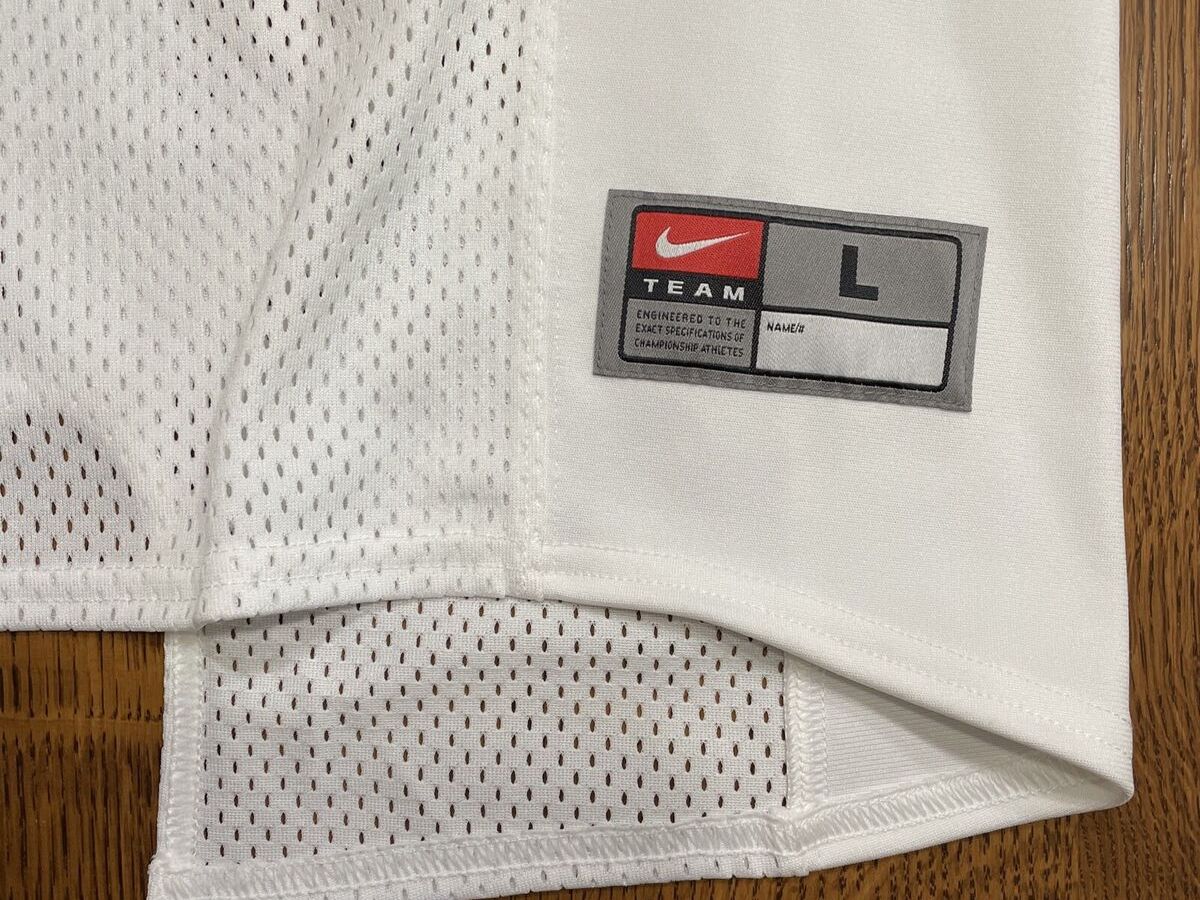
Mastering the Perfect Fit: Size, Comfort, and Style
Achieving the perfect fit is essential for both comfort and style when it comes to football jerseys. A well-fitting jersey not only enhances performance but also boosts confidence on and off the field. A study by the Journal of Fashion Marketing and Management highlighted that ill-fitting sportswear can negatively impact athletic performance by up to 15%.
Football jerseys come in a range of fits, catering to various preferences and body types. Loose and relaxed fits offer a casual and comfortable feel, ideal for everyday wear and leisure activities. On the other hand, fitted and tailored jerseys provide a sleek and modern look, accentuating the wearer’s physique. A survey by the Sports and Fitness Industry Association found that 63% of consumers prefer a fitted jersey for its fashionable appeal.
When selecting the perfect fit, it’s crucial to refer to the manufacturer’s sizing chart and measurements. Key measurements to consider include chest width, jersey length, and sleeve length. A study by the International Journal of Clothing Science and Technology emphasizes the importance of accurate sizing, stating that proper fit can enhance comfort by up to 30%.
Exploring Creative Jersey Design Elements
The world of football jersey design is a canvas for creativity and self-expression. From bold color schemes to intricate graphic elements, the possibilities are endless. A survey by the Color Marketing Group revealed that 65% of consumers are drawn to vibrant and unconventional colors when purchasing sports apparel. Clubs like Juventus and Barcelona have embraced this trend, introducing eye-catching pink and teal alternate jerseys, respectively.
Graphic elements and patterns have become increasingly popular in jersey design, adding depth and visual interest. Geometric shapes, abstract designs, and camouflage prints have graced the jerseys of teams like Manchester United, Arsenal, and Inter Milan. A study by the International Journal of Design found that incorporating unique graphic elements can increase brand recognition by up to 80%.
Typography plays a significant role in jersey aesthetics, with clubs opting for custom and hand-lettered fonts to create a distinctive identity. The Premier League’s Tottenham Hotspur partnered with a renowned calligrapher to develop a bespoke typeface for their jerseys, while Bundesliga’s Borussia Dortmund incorporated a bold, angular font inspired by the club’s industrial heritage.

Customization and Personalization: Making Your Jersey One-of-a-Kind
Customization and personalization have revolutionized the football jersey industry, allowing fans to create truly unique and individual pieces. According to a survey by the Football Fans Census, 72% of fans have purchased a customized jersey at least once in their lifetime.
Player names and numbers are the most popular form of customization, enabling fans to showcase their support for their favorite athletes. The English Premier League reported that personalized jersey sales accounted for 35% of total jersey revenue in the 2019-2020 season. Clubs like Real Madrid and Manchester United have capitalized on this trend, offering a wide range of customization options through their official online stores.
In addition to player names and numbers, custom embellishments and patches have gained traction among fans. Commemorative patches celebrating significant milestones, such as Chelsea’s 2012 Champions League victory or Liverpool’s 2020 Premier League title, have become highly sought-after collectibles. Decorative embroidery and appliques, like Paris Saint-Germain’s intricate Eiffel Tower crest, add a touch of sophistication and luxury to jerseys.
For fans seeking a truly bespoke experience, creating a completely custom jersey is now possible through specialized online platforms and collaborations with artists. Websites like Uni-Keeper and My Custom Jersey allow fans to design their jerseys from scratch, selecting colors, graphics, and personalized text. High-profile collaborations, such as Nike’s partnership with artist Virgil Abloh for the “Football, Mon Amour” collection, have pushed the boundaries of jersey customization, blending fashion and sports in unprecedented ways.
The Rise of Sustainable and Eco-Friendly Jerseys
As environmental consciousness grows, the demand for sustainable and eco-friendly football jerseys has skyrocketed. A study by Nielsen found that 73% of global consumers are willing to change their consumption habits to reduce their environmental impact. Football clubs and sportswear brands have responded to this shift by incorporating sustainable materials and practices into their jersey production.
Recycled polyester has emerged as a popular eco-friendly alternative to virgin polyester. Brands like Adidas and Nike have committed to using recycled materials in their jerseys, with Adidas pledging to eliminate virgin polyester from their products by 2024. The use of recycled polyester reduces carbon emissions by up to 75% compared to virgin polyester, according to a report by the Textile Exchange.
Organic cotton, grown without harmful pesticides and chemicals, has also gained traction in the football apparel industry. Clubs like Everton and Nottingham Forest have introduced jerseys made from organic cotton, promoting sustainable farming practices and reducing environmental impact. A study by the Soil Association found that organic cotton production can reduce water consumption by up to 91% compared to conventional cotton farming.
In addition to sustainable materials, football clubs are also exploring innovative solutions to reduce waste and promote circularity. Puma’s “Re:Jersey” program allows fans to return their old jerseys, which are then recycled into new products or donated to communities in need. The “Bring Back Our Jersey” initiative by Tottenham Hotspur encourages fans to donate their unwanted jerseys, which are then redistributed to underprivileged children across the globe.

Innovative Features: From Moisture Management to Smart Textiles
The world of football jersey technology is constantly evolving, with brands introducing innovative features to enhance performance and comfort. Moisture management has become a key focus, with advanced fabrics designed to wick sweat away from the body and facilitate quick drying. Adidas’ Climacool technology utilizes a combination of breathable fabrics, ventilation channels, and 3D-engineered mesh to regulate body temperature and keep players cool and dry.
Anti-microbial treatments have also gained prominence in football jerseys, combating odor and preventing the growth of bacteria. Puma’s evoKNIT jerseys feature silver-ion technology, which provides long-lasting odor control and freshness. A study by the Journal of Applied Microbiology found that silver-ion treated fabrics can reduce bacterial growth by up to 99.9%.
The integration of smart textiles and wearable technology has opened up new possibilities for performance monitoring and data collection. Catapult Sports’ GPS tracking system, used by clubs like Chelsea and Bayern Munich, utilizes sensors embedded in jerseys to track player movement, heart rate, and other vital statistics. This data can be used to optimize training, prevent injuries, and enhance overall performance.
Styling Tips: From Casual Chic to Elevated Ensembles
Football jerseys are no longer confined to the stadium; they have become a staple in fashion-forward wardrobes worldwide. Styling your jersey for various occasions is an art that combines creativity, confidence, and a keen eye for trends.
For a casual and laid-back look, pair your jersey with distressed denim shorts and high-top sneakers. Accessorize with a baseball cap featuring your club’s logo and a lightweight bomber jacket for a touch of street style. This effortless ensemble is perfect for weekend errands or casual get-togethers with friends.
To elevate your jersey game, try layering it under a tailored blazer or leather jacket. Pair this combination with slim-fit chinos or dark-wash jeans and Chelsea boots for a sophisticated twist. Add a minimalist watch and a sleek messenger bag to complete the look. This stylish outfit is ideal for semi-formal events or a night out in the city.
For a sports-luxe vibe, combine your jersey with athleisure pieces like tapered sweatpants and chunky sneakers. Layer with a sleek bomber jacket or a longline cardigan for added depth and texture. Accessorize with a statement watch and a leather backpack for a touch of refinement. This trendy ensemble is perfect for casual Fridays at the office or weekend brunches.
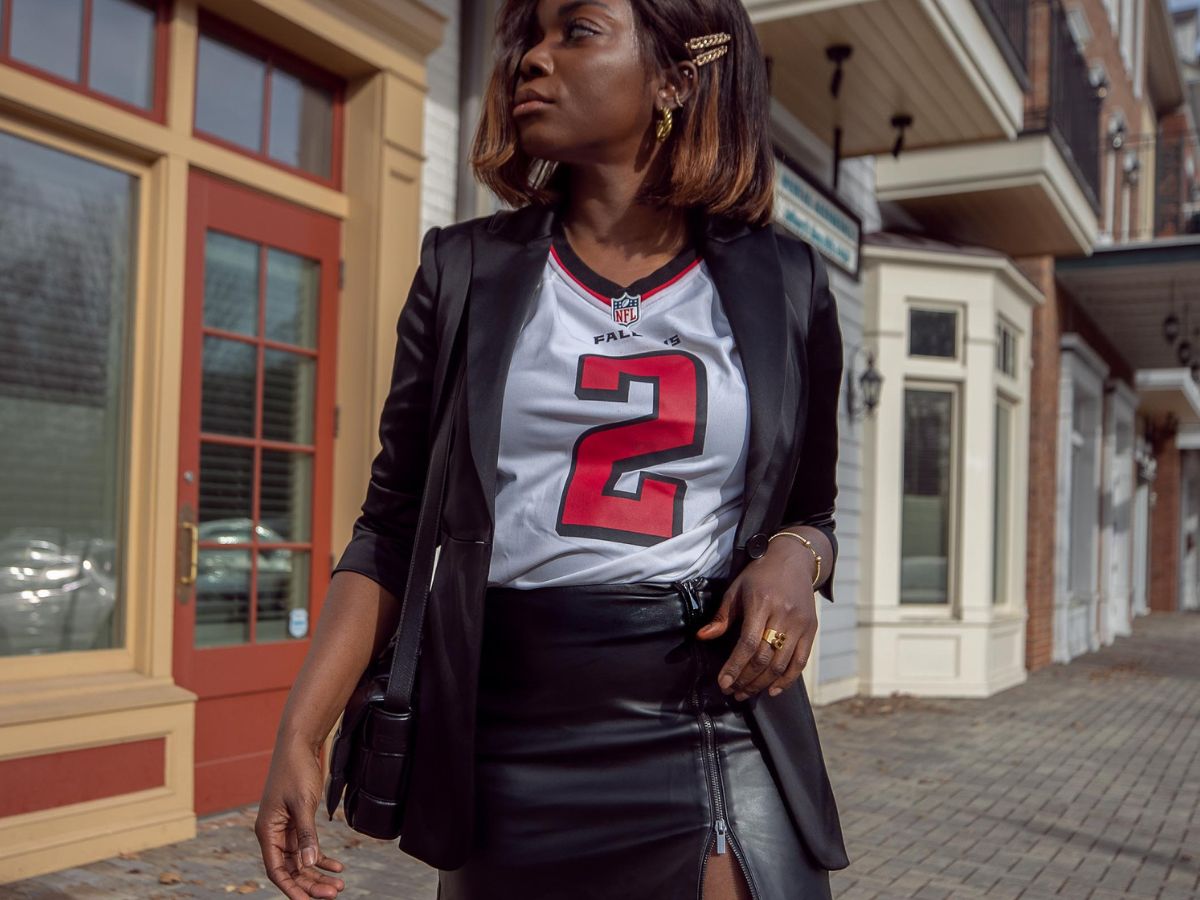
With the Mappe 09 Real Madrid Football Shirt, you can mix it with joggers or shorts for a sporty look.
The Future of Football Jersey Fashion
As the worlds of football and fashion continue to intertwine, the future of jersey design promises exciting innovations and collaborations. Brands are experimenting with 3D printing technology to create intricate and customizable jersey elements, such as Adidas’ Futurecraft 4D printed cleats. The integration of augmented reality and virtual try-on experiences will revolutionize the way fans shop for and customize their jerseys, allowing them to visualize their creations before purchasing.
Sustainability will remain a driving force in the football apparel industry, with brands exploring new eco-friendly materials and production methods. Adidas’ partnership with Parley for the Oceans has already resulted in jerseys made from recycled ocean plastic, while Nike’s “Move to Zero” campaign aims to reduce carbon emissions and waste throughout their supply chain.
The rise of limited-edition releases and exclusive collaborations will continue to fuel the demand for unique and collectible jerseys. Collaborations between football clubs and luxury fashion houses, such as the Paris Saint-Germain x Dior collection, will blur the lines between sports and high fashion, creating coveted pieces that transcend the pitch.
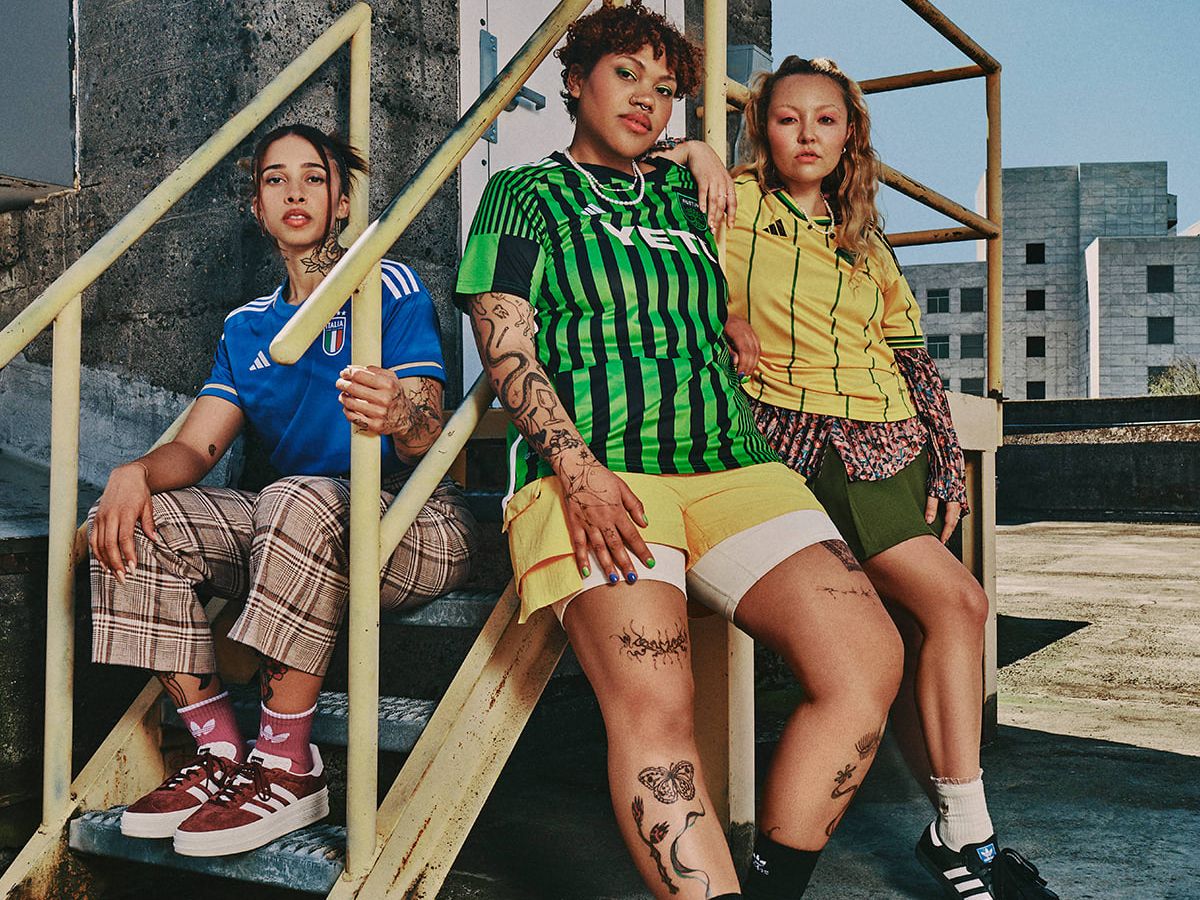
Conclusion
Football jerseys have evolved into a powerful medium for self-expression, style, and innovation. As fans continue to seek out fashionable and unique jerseys, clubs and sportswear brands are pushing the boundaries of design and technology to meet this demand. From advanced materials and customization options to sustainable practices and fashion-forward collaborations, the world of football jerseys is a dynamic and ever-evolving landscape.
By understanding the key aspects of jersey design, fit, and style, fans can make informed choices that reflect their personal taste and values. Whether you prefer a classic and understated look or a bold and unconventional statement, there is a football jersey out there that speaks to your individuality.
As you embark on your journey to find the perfect jersey, remember to prioritize comfort, quality, and self-expression. Don’t be afraid to experiment with different styles and combinations, and let your jersey be a reflection of your unique personality and love for the beautiful game.
In the words of legendary footballer Pelé, “Success is no accident. It is hard work, perseverance, learning, studying, sacrifice, and most of all, love of what you are doing or learning to do.” Let your football jersey be a testament to your passion, dedication, and style, both on and off the pitch.
FAQ Section:
Q1: What are the most popular football jersey brands among fans?
According to a survey by the Football Fans Census, the top three most popular football jersey brands among fans are Nike (38%), Adidas (32%), and Puma (15%). These brands are known for their high-quality materials, innovative designs, and partnerships with prominent football clubs worldwide.
Q2: How can fans ensure they are purchasing authentic football jerseys?
To avoid counterfeit jerseys, fans should purchase from official club stores, authorized retailers, or reputable online marketplaces. Look for holographic tags, proper labeling, and quality stitching to verify authenticity. Additionally, be cautious of prices that seem too good to be true, as counterfeit jerseys are often sold at significantly lower prices than genuine ones.
Q3: What are the most iconic football jersey designs in history?
Some of the most iconic football jersey designs include:
- Brazil’s 1970 World Cup jersey – featuring a vibrant yellow color and green trim
- AC Milan’s 1988-89 jersey – with its distinctive red and black stripes and Kappa logo
- England’s 1966 World Cup jersey – a classic red design with a simple white collar
- Barcelona’s 1974-75 jersey – introducing the famous blue and red vertical stripes
These designs have stood the test of time and continue to inspire modern jersey aesthetics.
Q4: How do limited-edition football jerseys differ from regular jerseys?
Limited-edition football jerseys are produced in smaller quantities and often feature unique designs, collaborations, or commemorative elements. These jerseys are highly sought-after by collectors and fans alike, often selling out quickly. Limited-edition jerseys can command higher prices due to their exclusivity and rarity, with some releases selling for several times the price of a regular jersey.
Q5: What role do football jerseys play in fan identity and belonging?
Football jerseys serve as a powerful symbol of fan identity and belonging. Wearing a team’s colors and crest allows fans to express their allegiance, passion, and connection to the club. A study by the Journal of Sport and Social Issues found that 76% of fans feel a stronger sense of belonging when wearing their team’s jersey. Jerseys also facilitate social bonding and camaraderie among fans, creating a shared sense of purpose and unity.
Q6: How have football jerseys evolved in terms of technology and performance?
Football jersey technology has advanced significantly in recent years, focusing on enhancing player performance and comfort. Innovations include:
- Lightweight fabrics: Modern jerseys can weigh as little as 100-150 grams, reducing player fatigue
- Moisture-wicking properties: Advanced materials like Dri-FIT and Climalite draw sweat away from the body, keeping players dry
- Ventilation zones: Strategically placed mesh panels and laser-cut holes improve airflow and temperature regulation
- Compression fits: Tight-fitting jerseys provide muscle support and reduce muscle vibration, aiding in performance and recovery
These advancements have revolutionized the way players perform on the pitch and have trickled down to fan apparel.
Q7: What are the most expensive football jerseys ever sold?
Some of the most expensive football jerseys ever sold at auction include:
- Pelé’s 1970 World Cup final jersey – sold for $225,109 in 2002
- Diego Maradona’s 1986 World Cup “Hand of God” jersey – sold for $2.4 million in 2022
- Zinedine Zidane’s 1998 World Cup final jersey – sold for $108,800 in 2018
- Bobby Moore’s 1966 World Cup final jersey – sold for $90,000 in 2010
These historic jerseys are valued for their rarity, cultural significance, and association with iconic moments in football history.
Q8: How can fans style football jerseys for different occasions?
Fans can style football jerseys for various occasions by:
- Casual wear: Pair with jeans, shorts, or leggings and sneakers for a relaxed, everyday look
- Semi-formal events: Layer under a blazer or leather jacket, and combine with chinos or dress pants and loafers or boots
- Athleisure: Mix with joggers, track pants, or yoga leggings, and add a hoodie or bomber jacket for a sporty vibe
- Workwear: Tuck into a pencil skirt or high-waisted trousers, and accessorize with a belt and statement jewelry for a creative, office-friendly ensemble
The key is to balance the jersey’s sporty elements with more refined pieces to create a cohesive and stylish outfit.
Q9: What are the environmental impacts of football jersey production?
The production of football jerseys can have significant environmental impacts, including:
- Water consumption: Producing one cotton jersey can require up to 2,700 liters of water
- Carbon emissions: The polyester used in jerseys is derived from petroleum, a non-renewable resource that contributes to greenhouse gas emissions
- Waste generation: Unsold or discarded jerseys often end up in landfills, contributing to textile waste
- Chemical pollution: Dyes and treatments used in jersey production can release harmful chemicals into waterways and ecosystems
To mitigate these impacts, brands are adopting sustainable practices, such as using recycled materials, reducing water consumption, and implementing circular economy principles.
Q10: How can fans contribute to a more sustainable football jersey industry?
Fans can support a more sustainable football jersey industry by:
- Choosing eco-friendly jerseys: Opt for jerseys made from recycled materials, organic cotton, or other sustainable fabrics
- Supporting sustainable brands: Purchase from brands that prioritize ethical manufacturing, fair labor practices, and environmental responsibility
- Reducing consumption: Consider buying fewer jerseys and wearing them for longer, reducing demand for new production
- Donating or recycling: Give unwanted jerseys to charities or participate in jersey recycling programs to extend their lifespan and keep them out of landfills
- Advocating for change: Use social media and consumer feedback to encourage clubs and brands to adopt more sustainable practices and offer eco-friendly jersey options
By making conscious choices and advocating for sustainability, fans can play a crucial role in driving positive change within the football jersey industry.



